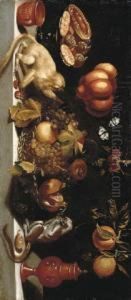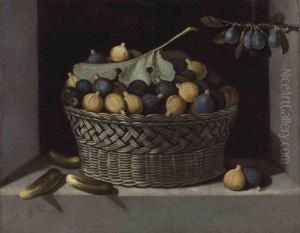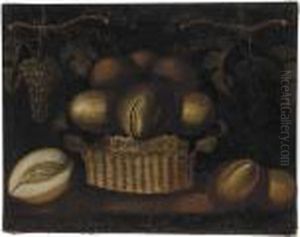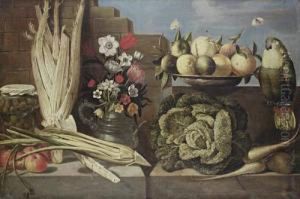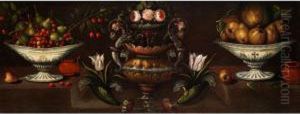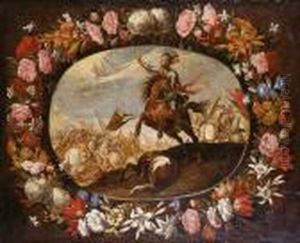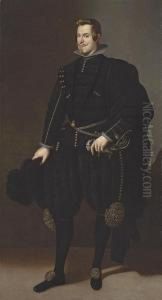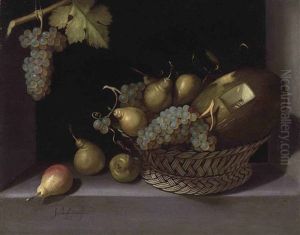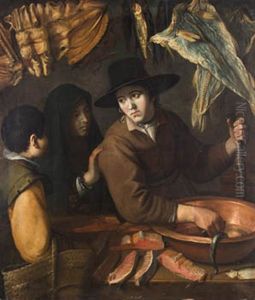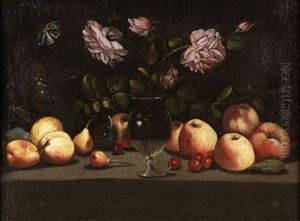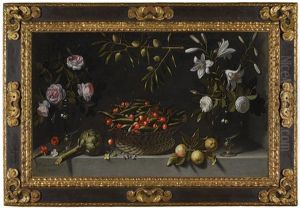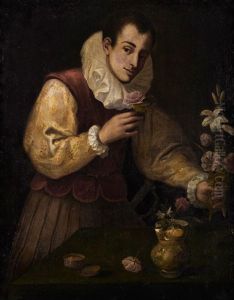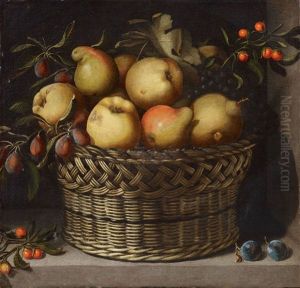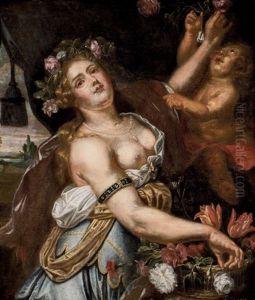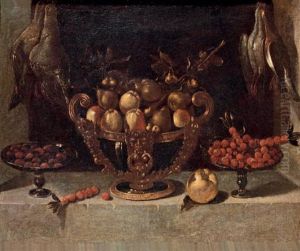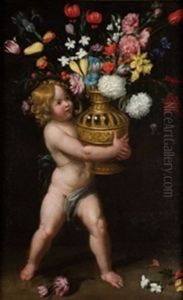Juan Van Der Hamen Y Leon Paintings
Juan van der Hamen y León was a Spanish still life painter of the Baroque period, born in Madrid in 1596 to a family of Flemish origin. His father, also named Juan van der Hamen, was a painter who had moved to Spain from Brussels. Van der Hamen y León is especially recognized for his contributions to the development of the still life genre in Spain, which was then known as 'bodegones'.
Van der Hamen y León's artistic career began in the court of Madrid, where he became known for his skill in painting still lifes, as well as for his work as a flower painter—a genre that was gaining popularity at the time. He had the ability to depict objects with remarkable realism and detail, often arranging them in complex compositions that showcased his technical prowess.
His work is characterized by the use of a restrained color palette and a strong sense of naturalism. He often included flowers, fruit, and objects such as musical instruments in his paintings, presenting them with a sophisticated elegance. One of his most famous works is 'Still Life with Artichokes, Flowers and Glass Vessels', which exemplifies his ability to give inanimate objects a sense of vitality and presence.
Despite his relatively short life, dying at the age of 35 in 1631, van der Hamen y León left a significant mark on Spanish painting. His work not only influenced his contemporaries but also had a lasting impact on the still life genre in Europe. His paintings can now be found in several major museums, including the Prado in Madrid, where they continue to be admired for their beauty and technical mastery.
